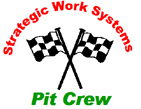Your Future Depends on It
For the past seven years, skilled and knowledgeable maintenance and reliability employees have been getting harder and harder to find. Coming during the strongest economy in decades and the lowest unemployment rate in the U.S. in nearly 30 years, the shortages have reached a critical point in almost every industrialized part of America. As the Baby Boomers begin retiring in the next few years, where will there replacements come from? How will we maintain the high levels of equipment and process reliability that our plants and facilities demand?
The military is not turning out as many technically qualified people into the labor market as they did through the 1980s. Vocational and technical schools have been hit with funding cuts and declining student interest. Technically qualified teachers are even harder to find now than in the peak of technical training in the 1970s and early 80s. On top of all this, many companies have cut back on their technical training efforts. We face a real challenge.
The skilled employee trends and challenges facing business and industry are presented in the 1997 Hudson Institute publication Workforce 2020. (See the Maintenance Technology magazine article “Workforce 2020: The Future of Maintenance and Reliability” from September 1997.) In their research, the Hudson Institute points to the shrinking labor force caused by slow population growth and the retirement of the baby boomers. But many of the baby boomers could work well past the traditional ages of retirement for financial reasons or because they enjoy their professions. Employers would be wise to find ways to retain their high levels of experience and transfer their knowledge to younger workers.
One answer may be focusing our attention on current non-maintenance employees as the maintenance mechanics and reliability technicians of the future. They know the company. They know the equipment and processes. They are proven performers. But some fundamental changes must occur to tap and further develop this potential pool of talent.
Here are a few of the critical steps to consider:
- Define the skills and knowledge required to maintain the desired levels of equipment and process reliability. Consider today’s needs as well as the needs of the future technologies. Look at the skilled employees’ retirement projections. Target the needs of the business, the equipment, and the people. A comprehensive duty/task analysis of maintenance and reliability job roles is a good starting point.
- Develop a “pay-and-progression plan” that will facilitate moving non-maintenance employees into a maintenance and reliability training progression. Now may be the time to also consider developing a “multi-skill/pay-for-applied skills” program for maintenance employees.
- Develop a way to legally assess and select candidates for the maintenance and reliability training program. Look for reading, writing, and math abilities; mechanical aptitude; learning ability; and computer aptitude as a minimum. Base the criteria on the duty/task analysis and the current top performing maintenance and reliability employees.
- Develop a structured, formal, in-plant training and qualification process for the targeted critical skills. Some assistance from local technical schools may be appropriate. But, lean toward more equipment- and process-specific training and skills qualification. Use your top-performers as coaches, mentors, and in some cases classroom instructors if needed. Budget an amount equal to two to four percent of payroll, at a minimum, for training purposes.
- Begin selecting the best-of-the-best employees to be formally groomed for maintenance and reliability job roles. Develop a schedule to phase these new “trainees” into the programs where skills shortages exist and well in advance of retiring skilled people.
- Base the progression of the trainees on achieving specified levels of demonstrated performance on the job rather than on written testing.
In general, top management must create a work environment that is conducive to senior employees sharing their skills and knowledge. In some facilities, people see their job security based on the little “secrets” they know about equipment maintenance. They must be assured that they will not lose their jobs or be penalized by sharing what they know as part of this new maintenance and reliability training program. In some plants, we have had to put this in writing.
Then, find ways to engage today’s employees in preparing for the future. Use the principles of “Worker Centered Learning” (See Maintenance Technology magazine’s March 1993 issue) to engage the employees in designing, developing, and implementing a training and qualification process.
So, how can we keep skilled people? Here are a few insights from more than 30 years in the people side of maintenance:
- Involve the top-skilled people in developing the next generation. Make their work rewarding and satisfying.
- Develop the skills of lower-level employees, giving them an opportunity to move into higher-paying job roles.
- Select all new, entry-level employees using formal maintenance aptitude and ability assessments. Some of these people will make great future maintenance and reliability technicians with formal training and qualification. Communicate what opportunities may be in their future.
- Reward what you value in your business. Compensate and recognize people who apply the skills and knowledge necessary to keep the business competitive.
- Focus on results and change the culture along the way. Avoid getting trapped into “implementing a program” in the hopes that it will improve performance. You should expect to see performance improvement results within two weeks to two months after beginning.
The future of your business will likely depend on how new employees are selected and hired, how they are trained to perform their jobs well, the rewards and satisfaction of a job well done, and how today’s employees are involved in making it all happen.
© 1999
Robert M. Williamson
Strategic Work Systems, Inc.
Columbus, NC 28722
RobertMW2@cs.com
![]() Download a PDF of this article by clicking here Keeping Skilled Employees
Download a PDF of this article by clicking here Keeping Skilled Employees
